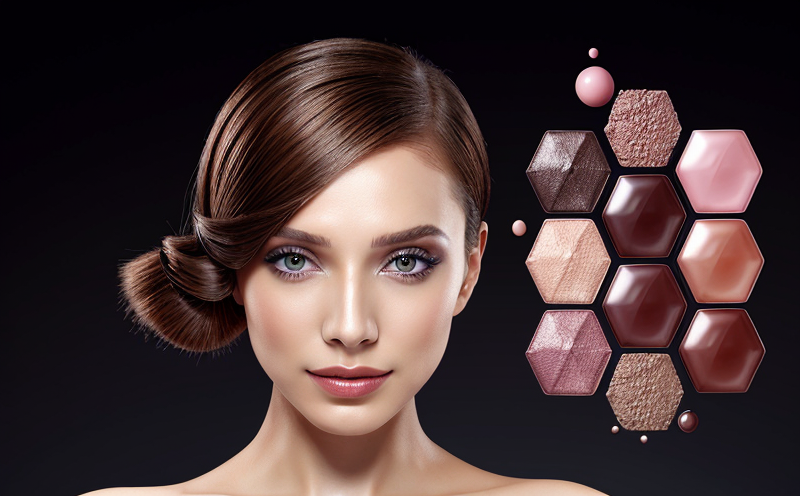Safety Testing of Innovative Botanical Nano-Extracts
The safety testing of innovative botanical nano-extracts is an essential process in the development and commercialization of cosmetics containing nanomaterials. This service ensures that these novel ingredients meet stringent regulatory requirements while delivering safe, effective products to consumers.
Botanical nano-extracts are derived from plants using advanced technology that breaks down plant materials into nanoparticles. These nanoparticles can have unique properties that enhance the performance and efficacy of cosmetic formulations. However, their small size and unconventional nature mean they present a potential risk if not properly evaluated. Our safety testing service focuses on identifying any adverse effects or risks associated with these extracts.
The testing process involves multiple steps to ensure comprehensive evaluation. Initially, we assess the physical and chemical characteristics of the nano-extracts, including particle size distribution and morphology. This information is crucial for understanding how the material behaves in different environments.
Once the baseline properties are established, we proceed with toxicity assessments using various in vitro and in vivo models. In vitro tests typically involve cell cultures, while in vivo studies use animal models or human volunteers. These experiments help us determine whether the nano-extracts can cause irritation, sensitization, or other adverse reactions.
Additionally, we investigate potential environmental impacts by examining biodegradability and ecotoxicity. This ensures that even if the product is disposed of improperly, it does not pose a threat to ecosystems. Regulatory compliance is also a critical part of our service; we ensure that all tests align with relevant international standards such as ISO 10993-4 for cytotoxicity testing.
To provide accurate and reliable results, we employ state-of-the-art instrumentation and analytical techniques. For instance, scanning electron microscopy (SEM) provides detailed images of the nano-extracts, while zeta potential measurements assess their stability in solution. Other key tools include laser diffraction instruments for particle size analysis and atomic force microscopes for studying surface features.
The results from these tests are then compiled into comprehensive reports that outline the safety profile of each botanical nano-extract. These documents serve as valuable resources for both regulatory submissions and internal decision-making processes within cosmetic companies.
Applied Standards
| Standard | Description |
|---|---|
| ISO 10993-4 | Cytotoxicity testing for medical devices, including materials used in cosmetics. |
| ASTM D7866 | Standard test method for determining the biodegradability of solid waste in a composting environment. |
| IEC 62760 | Environmental aspects of nanomaterials - Guidelines for product development and use. |
| EN 13958-1 | Standard for the characterization of particles in biological liquids. |
| FDA Cosmetics Regulations | Comprehensive guidelines covering all aspects of cosmetic product safety and labeling. |
Scope and Methodology
| Scope | Description |
|---|---|
| Testing of Nano-Extracts | Evaluation of nano-extracts derived from botanical sources. |
| Toxicity Assessment | In vitro and in vivo testing to assess potential health risks. |
| Environmental Impact Analysis | Evaluation of biodegradability and ecotoxicity for environmental safety. |
The methodology involves several stages. First, we receive the nano-extracts from our clients along with any necessary documentation about their composition and intended use. Next, we perform preliminary tests to characterize the physical and chemical properties of the extracts. Based on these findings, we design specific toxicity assays tailored to the unique characteristics of each extract.
For in vitro testing, we expose cultured cells to varying concentrations of the nano-extracts over different time periods. This allows us to observe changes in cellular behavior indicative of potential harm. In vivo studies follow similar protocols but involve live animals or human volunteers. These tests provide more holistic insights into how the extracts interact with living organisms.
Throughout the testing process, we continuously monitor and adjust our approaches based on emerging data and feedback from our clients. This ensures that our evaluations remain accurate and relevant to current scientific knowledge and regulatory expectations.
Eurolab Advantages
At Eurolab, we pride ourselves on offering unparalleled expertise in the field of nanotechnology and cosmetics. Our team comprises highly qualified scientists with extensive experience in handling nano-materials and conducting rigorous safety assessments.
We stay updated with the latest developments in nanotoxicology through continuous professional development programs and collaborations with leading researchers worldwide. This ensures that our testing methodologies remain cutting-edge, ensuring reliable and actionable results for our clients.
Our state-of-the-art facilities include specialized equipment designed specifically for handling nano-materials safely and accurately. From ultrafine particle counters to advanced imaging systems, we have everything needed to conduct thorough evaluations of even the most complex samples.
In addition to technical proficiency, Eurolab offers personalized service tailored to each client's unique needs. Our consultants work closely with our clients throughout every stage of the testing process, providing guidance and support whenever required. This collaborative approach helps ensure that all aspects of the project align perfectly with both regulatory requirements and business objectives.





